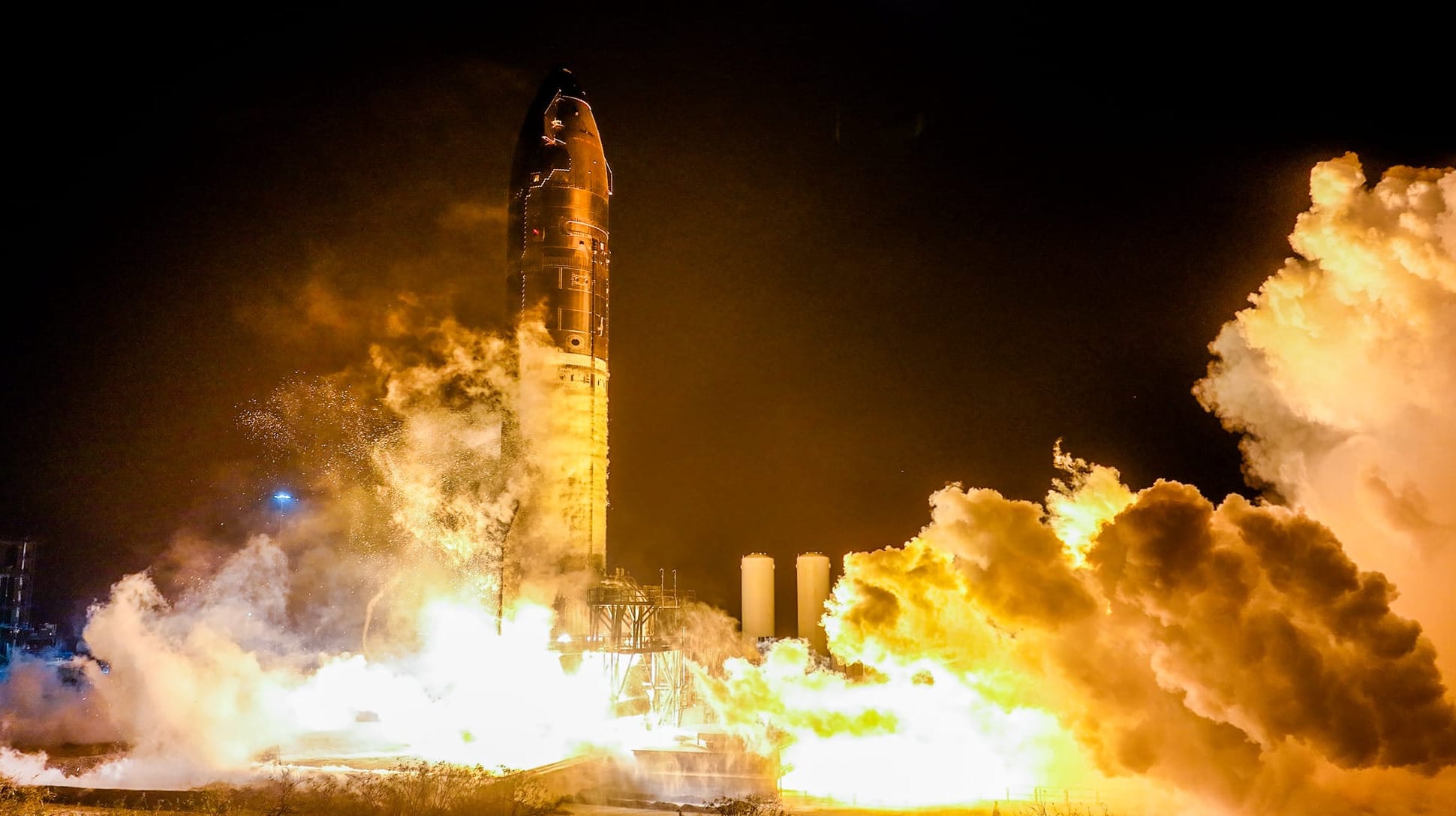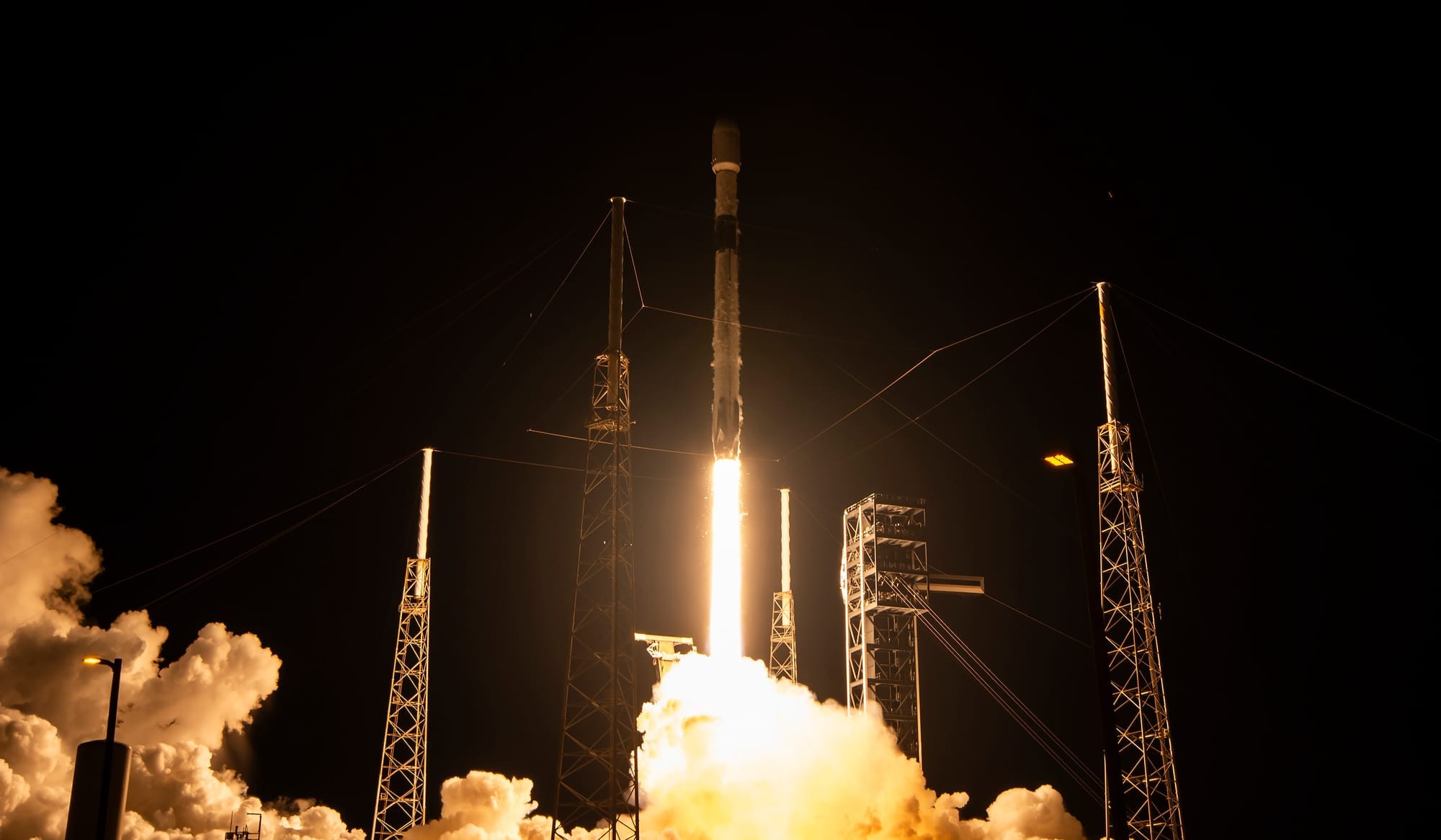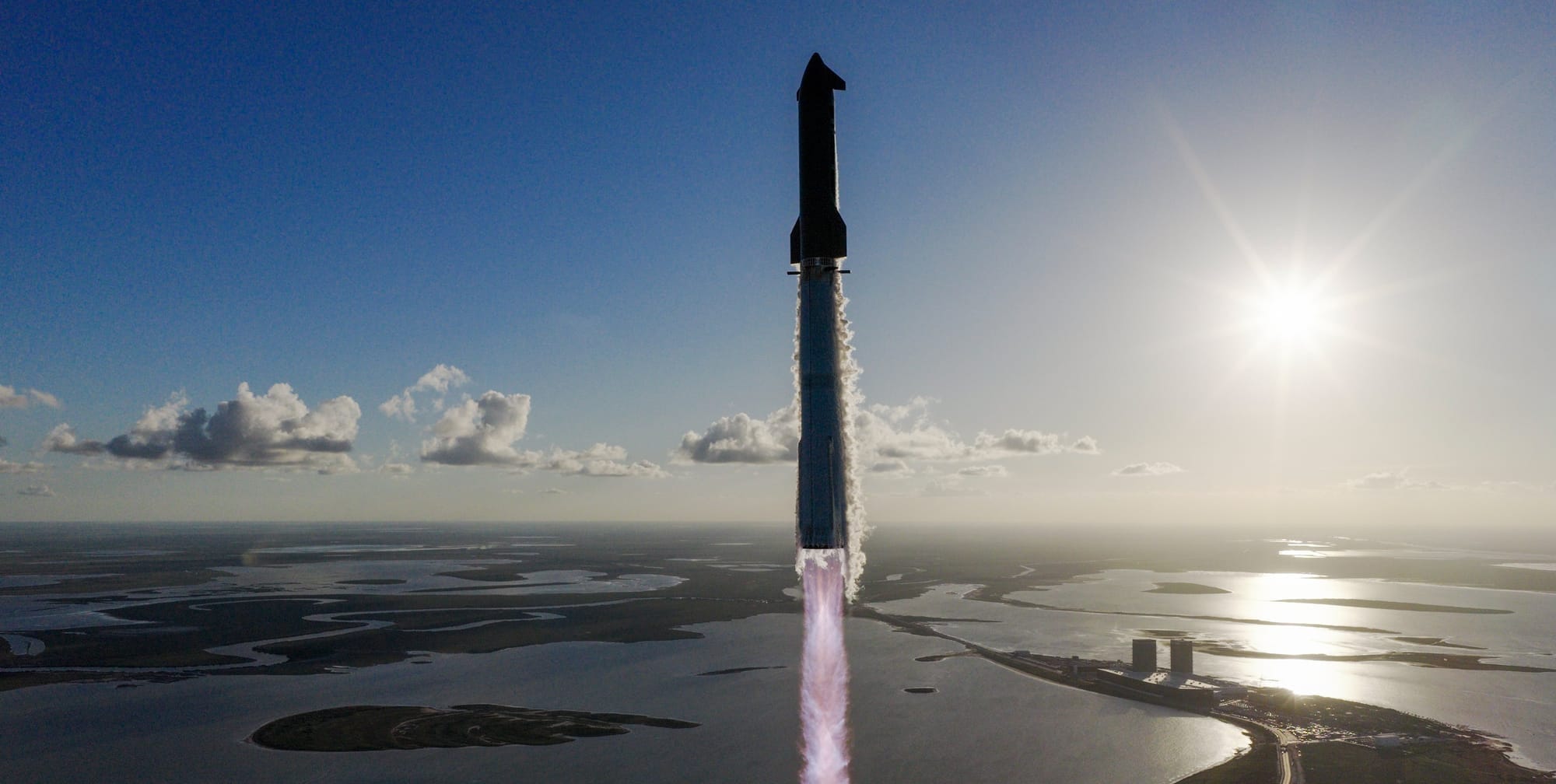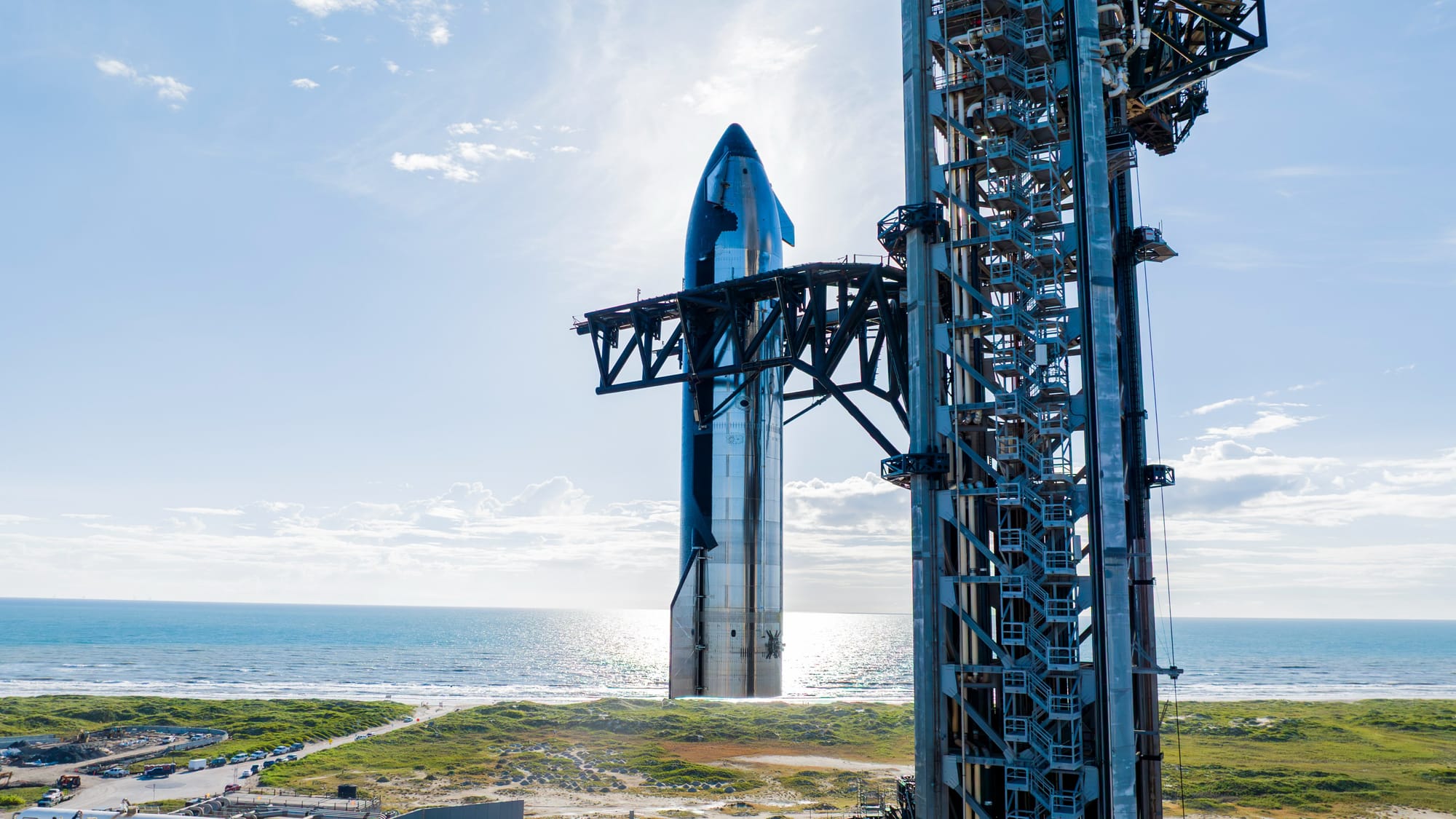Table of Contents
A little over a month ago, SpaceX flew Starship-Super Heavy's seventh flight test. During that flight test the company managed to repeat the feat of catching the booster but the upper-stage exploded during its ascent into orbit.
Regarding the failure of Starship during the previous flight test, SpaceX stated the following:
"After vehicle separation, Starship's six second stage Raptor engines powered the vehicle along its expected trajectory. Approximately two minutes into its burn, a flash was observed in the aft section of the vehicle near one of the Raptor vacuum engines. This aft section, commonly referred to as the attic, is an unpressurized area between the bottom of the liquid oxygen tank and the aft heatshield. Sensors in the attic detected a pressure rise indicative of a leak after the flash was seen."
"Roughly two minutes later, another flash was observed followed by sustained fires in the attic. These eventually caused all but one of Starship’s engines to execute controlled shut down sequences and ultimately led to a loss of communication with the ship. Telemetry from the vehicle was last received just over eight minutes and 20 seconds into flight."
"The most probable root cause for the loss of ship was identified as a harmonic response several times stronger in flight than had been seen during testing, which led to increased stress on hardware in the propulsion system. The subsequent propellant leaks exceeded the venting capability of the ship’s attic area and resulted in sustained fires."
Since the last flight, SpaceX has been working toward flying again while being grounded by the U.S. Federal Aviation Administration. Despite this, SpaceX Chief Executive Officer Elon Musk has stated that the eighth flight test could occur as early as Friday February 28th.
The seventh flight test of Starship ended before reaching its ambitious goals. Lessons learned are being applied to future vehicles to make them more reliable. A technical summary of the investigation can be found here → https://t.co/bPVruJ0uY7 pic.twitter.com/9noR4rrs7W
— SpaceX (@SpaceX) February 24, 2025
SpaceX's recap video of the seventh flight test, via SpaceX on Twitter.
So far Musk and SpaceX have shared a few details about the eighth flight test, but as the last flight failed before any major criteria could be completed it will be aiming to achieve the same goals. These goals will hopefully be achieved by Ship 34, the second 'Block 2' Starship, and Booster 15. Some details on the upcoming flight are as follows:
"The upcoming flight will target objectives not reached on the previous test, including Starship’s first payload deployment and multiple reentry experiments geared towards returning the upper stage to the launch site for catch. The flight also includes the launch, return, and catch of the Super Heavy booster."
"Extensive upgrades to Starship’s upper stage debuted on the previous flight test, focused on adding reliability and performance across all phases of flight. Starship’s forward flaps have been upgraded to significantly reduce their exposure to reentry heating while simplifying the underlying mechanisms and protective tiling. Redesigns to the propulsion system, including a 25 percent increase in propellant volume over previous generations, add additional vehicle performance and the ability to fly longer duration missions. And the vehicle’s avionics underwent a complete redesign, adding additional capability and redundancy for increasingly complex missions like propellant transfer and ship return to the launch site."
Like last time, Ship 34 will also attempt to deploy Starship's first payloads with a handful of Starlink satellite simulators being released. These payloads will be destroyed upon reentry due to the flight tests' suborbital trajectory. An in-space Raptor relight test is also planned.
Various pieces of hardware for Starship upper-stage tower catches are also flying on Ship 34 to thermally test the equipment. Experimental tiles are also on the Ship to test alternative thermal protection systems, such as active cooling, along with some being removed to stress test potential weak spots.
As a 'Block 2' Starship hopefully survives more than a few minutes this time, Booster 15 will be heading back to the launch site to repeat the feat of being caught by the launch tower. This feat has so far been proven twice during the previous flight test as well as the fifth flight test.
If the eighth flight test is successful, flight nine could head into orbit potentially for the first tower catch of a Starship.
2025 is set to be a key year for the Starship program as a Ship-to-Ship propellant transfer is expected this year by NASA. Propellant transfer between two vehicles is critical for getting the Starship lunar lander out to the Moon, and returning American astronauts to the surface through the Artemis program.
What is Starship-Super Heavy?
Starship-Super Heavy is SpaceX's in-development fully reusable super heavy-lift launch vehicle and the largest rocket currently flying. SpaceX is currently aiming to have the launch vehicle deliver one-hundred and fifty tons to low Earth orbit while reused or two-hundred and fifty tons when expended, although there are rumors from SpaceX of an expendable payload capacity of three-hundred tons.
On the launch pad, Starship-Super Heavy is one-hundred and twenty-four meters tall and weighs 5,000,000 kilograms fully fuelled. The diameter of both vehicles is nine meters, excluding aerodynamic control surfaces.
What is Starship?
Starship long-duration static fire ahead of the eighth flight test pic.twitter.com/KJmSKdxDCC
— SpaceX (@SpaceX) February 12, 2025
Ship 34 performing a static fire test ahead of the eighth flight test, via SpaceX on Twitter.
Starship is the second-stage of the Starship-Super Heavy launch vehicle and is planned to be capable of multiple missions into orbit, after a short refurbishment. The vehicle is fifty meters tall and nine meters in diameter, excluding its four aerodynamic control surfaces. Fully fuelled with liquid methane and liquid oyxgen Starship is believed to weigh 1,300,000 kilograms with an approximate weight of 100,000 kilograms unfuelled.
The Starship second-stage is powered by three sea-level Raptor engines along with three vacuum-optimized Raptor engines. These sea-level engines are believed to generate 230 tons of thrust each with the vacuum-optimized engines generating 258 tons of thrust each for a total combined 1,500 tons of thrust for Starship. The vacuum-optimized Raptors are unable to gimbal requiring the sea-level Raptors for control of the second-stage on ascent and landing.
In order to survive re-entry for reuse, Starship has several thousand thermal protection tiles on one side of the vehicle and on all four of its aerodynamic control surfaces. The four control surfaces help guide the vehicle during re-entry and prior to landing inside the atmosphere at a pre-determined location. Starship also has a series of small thrusters to control the vehicle in space before re-entry.
SpaceX is believed to be working on a few variants of Starship for use as a Moon lander, propellant tanker, space station, Mars lander, and as a crewed spacecraft.
What is Super Heavy?

Super Heavy, also called 'the Super Heavy booster', is the first-stage of SpaceX's Starship-Super Heavy launch vehicle. The giant Super Heavy first-stage is planned to be capable of multiple flights per day with minimal refurbishments and inspections. The vehicle is seventy-one meters tall and nine meters in diameter, excluding its four grid fins and chines. Fully fuelled with liquid methane and liquid oyxgen Super Heavy is believed to weigh 3,600,000 kilograms with an approximate mass of 200,000 kilograms unfuelled.
The Super Heavy first-stage is powered by thirty-three sea-level Raptor engines generating a combined thrust of 7,590 tons, with each engine generating 230 tons of thrust. The outer twenty Raptor engines are unable to gimbal with the inner thirteen being able to for control of the first-stage.
To enable the reuse of Super Heavy, the vehicle has four large grid fins placed in the interstage to assist in guiding and controlling during descent. Super Heavy also has four chines running along the lower third of it to generate lift and assist in stabilization.
Shortly after completing the ascent, Super Heavy relights ten engines, as three were running during staging, and performs a 'boost back' burn in order to return to the launch site. After the 'boost back' burn is completed the engines shut down with Super Heavy being guided by a series of small thrusters and its grid fins. Once Super Heavy is at the correct altitude above its landing location three engines start back up for the landing burn. SpaceX currently plans to have Super Heavy land in the ocean with launch site landing attempts happening with later flights.
Super Heavy also features a hot-staging ring atop of it to allow for a faster and simpler staging process, according to SpaceX. The hot-staging ring has dozens of gaps on the sides to allow for the Raptor engine exhaust of Starship to escape.






